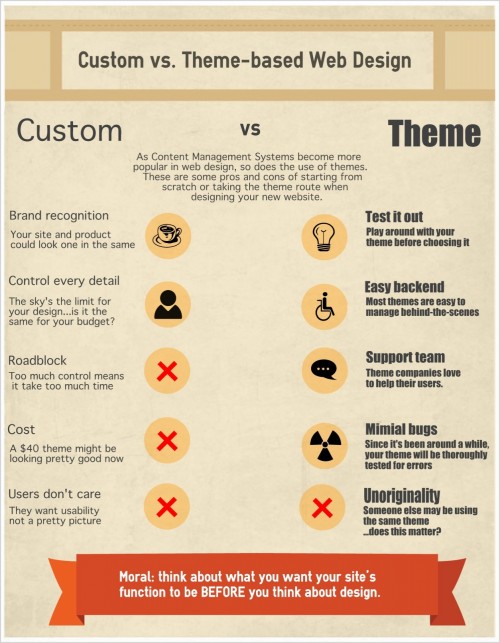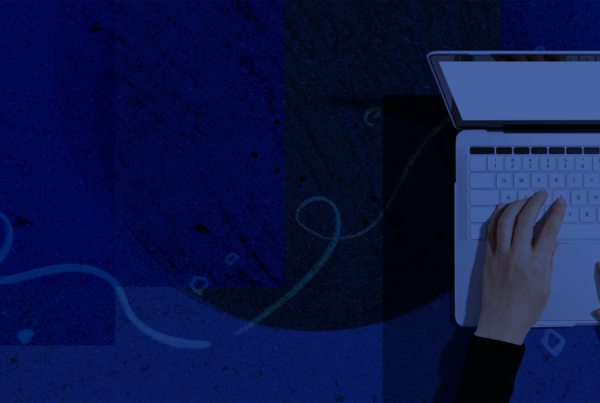Introduction
If you were buying your first house what would be important to you? Chances are you’ve lived in apartments or dilapidated college shacks up to this point and have been keeping a running list of all the things you absolutely need once you have a home that is completely yours. Whether it’s having a porch, 2 bathrooms, a long drive way or a picket fence, most likely not on your list is “it needs to be one of a kind.”
When tackling your company’s or brands new web design you should go through the same process. Think about what’s absolutely important to you and what should be included in the new site. What should be its main function. These aspects are so much more important than, “it should look like nothing people have ever seen before.” That would actually be a terrible approach because the number 1 thing users want out of a website is usability (can they find what they’re looking for).
So just like your new home, think about the functions and details that are necessary for you and your users and leave uniqueness and originality as a very distant afterthought. As all-around marketing genius Seth Godin said, “The design is important, but the design is not the point.”
This infographic will give you the quick details of this post, breaking down the advantages and disadvantages of custom and theme-based web design.

Theme: Pros
Get acquainted
When you decide to go the theme route with your new website you will minimize the amount of “surpises” that occur during development. Most professional themes allow you to preview them, play around with functionality and get a feel for the page structure. Depending on the agency or designer you work with, there may be some wiggle room but for the most part you can be confident that your site will ultimately act and feel like the preview.
A backend anyone can use
These days it seems there is an endless amount of small design firms churning out premium themes for the major CMS systems. Each one comes with a unique backend interface that even a child could use. They think of everything! Color, font sizes, content layouts, header styles, sliders, portfolios, social integration, the list goes on and on. Your internal team will be happy that they can build upon your new website without knowing any mind-bending code languages. In most cases, themes are a joy to customize.
A flawless design (ok, not flawless, but close)
What I mean by flawless is professional grade themes have been tested again and again and again. The development teams behind them are constantly updating and improving the themes. It’s like your website will be a living, breathing animal. This doesn’t mean you shouldn’t consider a redesign 3-4 years down the road (you should) but you won’t have to settle for bugs or acrobatic workarounds that inhibit your internal development team from making edits. Nowadays, themes are the real deal. Major companies like Ebay and Sony have sites that use WordPress themes and you can bet they are practically bug-free.
Support Team
If you decided to work with a professional developer, you will, ideally, have him or her around for technical support after you hit the launch date. But maybe you wanted to minimize costs and your marketing department (or yourself) took on the project by purchasing a premium theme. No sweat! Almost all theme companies offer either a support forum or technical support service. We recently used a theme from Qode Interactive and I was having some buggy issues. I left a few comments on their Themeforest profile and within about 20 minutes someone was responding, emailing me and on the case.
Theme: Cons
A sense of unoriginality
 I’m obligated to mention this point because it’s always brought up in the defense for custom-built websites. The fact of the matter is yes, there is a chance that you and another company (or even your competitor) will use the same theme. But does that matter? Does it matter that Forbes.com uses a WordPress theme to deliver content to its users? If Coke and Pepsi used the same exact theme on their sites would anyone care? Would common users notice? Probably not. Sites exist to serve simple purposes: sell, inform or entertain. If you can execute one of these 3 things better than your competitors does it matter if you use the same basic framework to get there? I think it makes you better since you did more with the same resources.
I’m obligated to mention this point because it’s always brought up in the defense for custom-built websites. The fact of the matter is yes, there is a chance that you and another company (or even your competitor) will use the same theme. But does that matter? Does it matter that Forbes.com uses a WordPress theme to deliver content to its users? If Coke and Pepsi used the same exact theme on their sites would anyone care? Would common users notice? Probably not. Sites exist to serve simple purposes: sell, inform or entertain. If you can execute one of these 3 things better than your competitors does it matter if you use the same basic framework to get there? I think it makes you better since you did more with the same resources.
Custom page structure is limited
This is probably obvious but when you work with a theme there already exists a general page structure that is uniform throughout the whole theme. That being said, most themes come equipped with various page formats or some even integrate with layout frameworks like Pagelines. Ultimately this is a mute point because the agency you decide to work with should only invest time into a theme that you have agreed upon for its layout and structure. The point of a theme is to avoid customization.
Custom: Pros
A seamless blend with your brand
The main benefit of a custom-built site is obviously that it can be whatever you want. If you sell cereal and you want your homepage to look like the front of a cereal box, you can do that. Your brand and your site can be joined at the hip if you desire. Although your site can look however you want if you go the custom route, this is sometimes the downfall of a brand or company.
One thing to consider is the old adage “form follows function”. This interactive cereal box homepage would be great for a kids cereal but I don’t see it working for a site like Kashi that is more focused on the health benefits rather than how fun it is to eat. Just make sure you decide what the purpose of your site is before you design it from scratch.
Client control over every single detail
This point is directed more towards agencies who build sites for clients. If your client chooses the custom route they will be able to have the exact design they were hoping for. Every detail will be under their control, but on the negative side, every detail will be under their control. It slows productivity way down if your client is focusing on specific details instead of the over-arching strategy of the website. Themes on the other hand take most of the design elements out of the conversation, allowing you and your client to get back to what really matters…conversions.
Custom: Cons
The roadblock (or bottleneck)

If you’re taking the lead on your company’s new web design, chances are you’ll experience the “too many chefs in the kitchen” situation. Your boss, your marketing team, your sales department and your mailman will all want to weigh in on how the site should look. This will result in a dead stop of productivity. We’ve experienced this numerous times at our agency. It’s no one’s fault, there are just too many angles and strategies to take into consideration.
Consider instead a scenario where you collaborate with these same people to determine your goals and needs for the new design and then you come to them with 4 or 5 themes that would fit these parameters. Your boss picks one, you move on, your site is underway.
Cost
At our agency we take the time with all of our clients to understand their needs so we can lay out an appropriate strategy for their product, brand or service. When you decide to start from scratch and design a custom design we take advantage of developing a wireframe, which is basically a mockup of your site that is strictly focused on placement and strategy. Although this can be beneficial, more work equals more cost for you. I also think it’s safe to say that most custom designs are nothing to extravagant and the same outcome could have been achieved using a theme. So consider your budget when you’re deciding how to tackle your new design.
Conclusion
I probably said a few times throughout this post but it’s that important. Think of your site’s purpose first and foremost. Your bottom line will thank you and your users will thank you. Figure out the purpose of your re-design or your brand new website and then decide if you need a custom design or if a pre-existing theme will fulfill everything you need.








